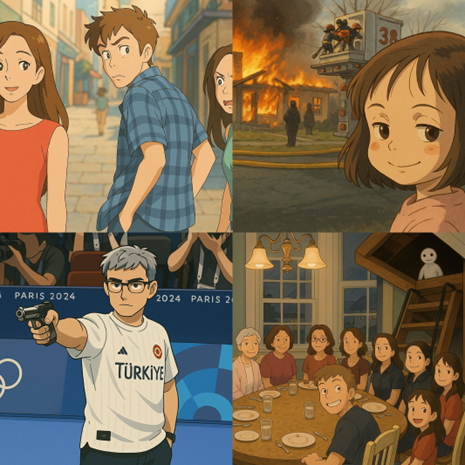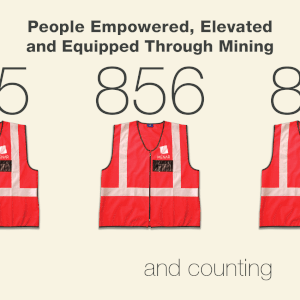By Mirna Fahmy
Surprisingly, intentionally or unwittingly, April’s start was buzzed with a viral surge of Ghibli-style AI-generated images across social media.
The “surprise” is fitting, given that April holds a special place for anime enthusiasts (commonly known as otaku — those deeply passionate about anime and Japanese culture). Every year, many anime fans emotionally tune into the month through “Your Lie in April”, the beloved series whose iconic theme song “Hikarunara” by Goose House sets a nostalgic mood across streaming platforms.
Though OpenAI–Chat GPT’s mother creator––released its upgraded image-generation tools in late March 2025, Ghibli’s anime AI image version flamed the social media as a disease in an April entry. It’s all thanks to Grant Slatton, a Seattle-based software engineer, who is now widely credited with popularizing the viral AI Ghibli-style photo trend on social media.
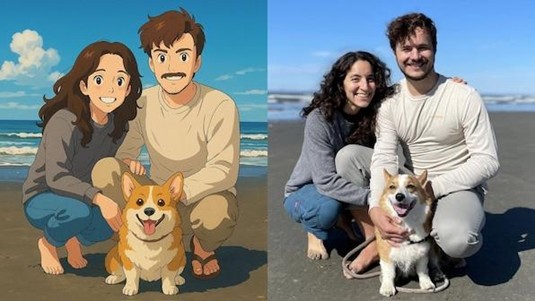
Slatton posted an AI-generated Studio Ghibli-style portrait of his family and dog at the beach on X (formerly Twitter). His caption-“Tremendous alpha right now in sending your wife photos of y’all converted to Studio Ghibli anime”-quickly resonated with users, amassing tens of thousands of likes and millions of views within hours. The post triggered a flood of similar Ghibli-inspired edits across platforms like X, Instagram, LinkedIn, and Reddit.
The sudden popularity even caused a ripple effect among AI platforms. ChatGPT, OpenAI’s flagship product, faced a flood of user prompts asking for “AI Ghibli-Style Photo” conversions, while Elon Musk’s new AI tool, Grok 3, quickly joined the trend, offering similar image transformations. Other styles like Muppet- or puppet-inspired AI art also began surfacing, but it was the Ghibli aesthetic that dominated the scroll.
While AI-generated Ghibli-style images existed before, Slatton’s viral tweet is recognized as the catalyst that propelled the trend into mainstream global popularity. His post sparked a snowball effect, with celebrities, politicians, and everyday users joining in, further fueling the craze.
What Is Ghibli’s Anime?
Studio Ghibli’s anime refers to the animated films produced by Studio Ghibli, the legendary Japanese animation studio founded in 1985 by Hayao Miyazaki, Isao Takahata, and Toshio Suzuki.
Renowned for its breathtaking artistry and emotional depth, Studio Ghibli explores profound themes such as environmentalism, coming of age, and the complexity of human emotions. Its works transcend age barriers, resonating equally with children, teenagers, and adults. Often categorized under the genre of “magical realism,” Ghibli films evoke a powerful sense of nostalgia while offering viewers a comforting, immersive experience.
The studio’s animation style is famous for its intricate hand-drawn details, imaginative landscapes, and emotionally rich characters. Signature films like Spirited Away, My Neighbor Totoro, Princess Mononoke, and Howl’s Moving Castle have left an indelible mark on global popular culture.
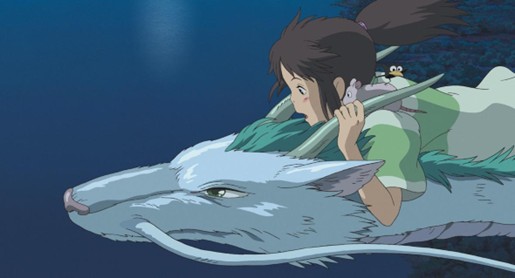
Studio Ghibli’s artistry has also earned critical acclaim on the world stage. Spirited Away, directed by Hayao Miyazaki, won the Academy Award for Best Animated Feature in 2003 — making it the first Studio Ghibli film to win an Oscar. More recently, Miyazaki’s 2023 film The Boy and the Heron claimed the Academy Award for Best Animated Feature at the 96th Academy Awards in 2024, reinforcing Ghibli’s reputation as a powerhouse of timeless storytelling and visual innovation.
How Long Does It Take to Produce an Anime series?
Japan’s animation industry is vast and prolific, home to more than 430 production companies today, including major studios like Toei Animation, Madhouse, Sunrise, Bones, and, of course, Studio Ghibli. While around 500 new anime works were produced in 2018 during the industry’s peak, recent years have seen a slight dip, with approximately 300 to 400 new series — including TV shows, OVAs, and web series — emerging annually.
Amid this bustling industry, Studio Ghibli stands apart for its uniquely slow, meticulous approach to animation.
Creating a Studio Ghibli film or any anime series is a painstaking process that can span several years. Every frame is a labor of love, crafted with obsessive attention to detail and an unwavering commitment to quality.
For instance, a single four-second crowd scene from The Wind Rises (2013), a Ghibli production reportedly took an astonishing one year and three months to complete. This reflects the intensive, iterative process: hand-drawing each frame, digitally inking and painting them, and undergoing constant revisions under the meticulous eye of director Hayao Miyazaki.
Generally, the production of a full-length Ghibli feature unfolds over several phases. Extensive pre-production — including storyboarding, scripting, and character and world design — lays the foundation. Then comes the most strenuous part: hand-drawn animation. Thousands of frames are created by hand, with animators dedicating extraordinary precision to every motion.
A glimpse into this painstaking process can be seen in the latest anime releases of Winter 2025. In Zenshu, for example, animators showcased how a single second of moving action — like running or sword-fighting — can require multiple pages of hand-drawn sequences, each page illustrating tiny shifts to simulate seamless motion.
Finally, the production moves into background painting, digital processing, and post-production. One of the most vital finishing touches is the inclusion of seiyuu — the Japanese voice actors — whose performances breathe life into the characters, crystallizing the magic that makes anime’s creations ready for the world to inhale and admire.
Ghibli Founder Hayao Miyazaki’s Reaction to AI
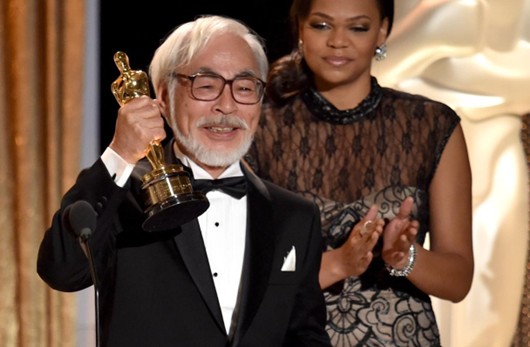
Amid the sheer obsession of these newly introduced AI-anime images, Studio Ghibli’s co-founder and principal director, Hayao Miyazaki, comments resurfaced in 2025. Miyazaki has been openly critical of AI-generated animation. In a widely circulated video from 2016, Miyazaki described an AI animation demonstration as “utterly disgusting” and “an insult to life itself,” stating, “I never want to use this technology in our work.”
His reaction was specifically to an AI-generated animation that depicted unnatural, zombie-like movement, which he found deeply unsettling and lacking in humanity. His criticism was aimed at the lack of human touch and emotional depth in AI-generated animation.
Ethical Concerns
The Ghibli AI trend has ignited a wave of discussions, bringing both exciting possibilities and serious ethical concerns to the forefront of the animation industry.
On one hand, AI tools have democratized animation, allowing amateur creators to replicate professional-level styles that were once accessible only to trained artists. These technologies can accelerate parts of the animation process, freeing studios to experiment more boldly with styles and storytelling techniques.
However, the trend also exposes deep challenges. A surge of AI-generated content risks oversaturating the market, making it harder for original works to gain visibility. The ethical questions are even more pressing when it comes to copyright infringement: many AI models are trained on existing artwork, including Studio Ghibli’s films, raising serious concerns about intellectual property rights. Using AI to mimic the Ghibli style without acknowledgment can border on cultural and artistic misappropriation, disrespecting the original creators’ intent and craftsmanship.
Financial realities add another layer of complexity. In Japan, animators are notoriously underpaid despite the country’s global leadership in the animation sector. According to industry reports, even top-tier animators often earn between $17,000 and $46,000 a year — significantly less than their Western counterparts. Junior animators, in particular, struggle with low wages, long working hours (averaging around 219 hours per month — 34% above the national average), and exhausting workloads that lead to burnout.
Structural issues within the industry exacerbate the problem. Under Japan’s “production committee” system, profits and rights are primarily held by investors — such as publishers, distributors, advertisers, and gaming companies — while studios and animators receive only a small fraction, even if a series becomes a global hit. As reported by major Japanese outlets like NHK and Nippon.com, this model discourages young talent from entering or remaining in the field, potentially threatening the future of Japan’s creative soft power.
Internationally, graphic designers and illustrators also face similar struggles. Despite investing heavily in skills and expensive tools, many find that pay rates do not reflect the effort and innovation required. While AI offers a cheap and fast solution, it is largely suited for short-term production needs, not for the evolving, sustained creativity that real artists continuously bring to the industry.
From a security standpoint, the Egyptian Feminist Initiative “Speak-UP”, which addresses all forms of abuse against children, adults, and women, has issued a warning on its social media accounts regarding potential risks. It was emphasized that only images previously shared on social media, or those that one is comfortable with being used, should be uploaded. This means avoiding personal or private images. The risks include: uploaded photos potentially being stored or used to improve AI models, which could compromise privacy; data security concerns, such as the possibility of data leaks or unauthorized access; and the misuse of images, where personal photos may be altered, shared, or used in unintended ways by third parties.
It is important to understand that once images are uploaded, control over them is lost, as not everyone reads the privacy policies of platforms, and these policies are not always transparently written.
Will AI replace anime production?
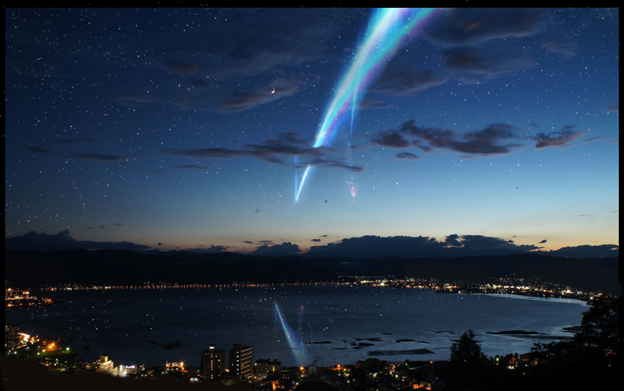
The most thrilling yet troubling question haunting the future of anime is whether AI could eventually replace traditional production. Comments and debates ripple through the industry, amplifying both hope and fear.
A brief but poignant video captures Studio Ghibli’s co-founder Hayao Miyazaki reflecting on this dilemma. Miyazaki, known for his fierce devotion to hand-drawn artistry, admits that he believes anime production may one day fade under the pressure of AI. Yet, he vows to continue creating anime by traditional methods until his very last breath.
From the humble perspective of this article’s author — an ardent anime enthusiast approaching 400 completed series — the answer is firm: “AI will never replace true anime”.
Anime is not just animation — it’s an immersive art form that fuses breathtaking visuals, deep storytelling, and rich emotion in a way that few mediums can. Unlike typical cartoons, anime treats its audience with mature, layered narratives, exploring complex themes like love, loss, honor, and identity. Every frame feels like a painting, every musical note deepens the atmosphere, and every character journey pulls you into a world where beauty, philosophy, and raw human emotion collide. Anime doesn’t just entertain — it enchants all the senses, offering a mesmerizing experience that lingers long after the final scene.
This is precisely where AI falls short. No matter how sophisticated, AI lacks the spark of infinite human imagination and the emotional authenticity born of lived experience. It can replicate patterns, but it cannot dream. It can remix styles, but it cannot feel. In the grand, intricate dance of artistry and spirit that defines anime, human creativity remains irreplaceable.
In the end, anime can inject hope, resilience, creativity and power to the lost souls and minds, but AI can’t.

